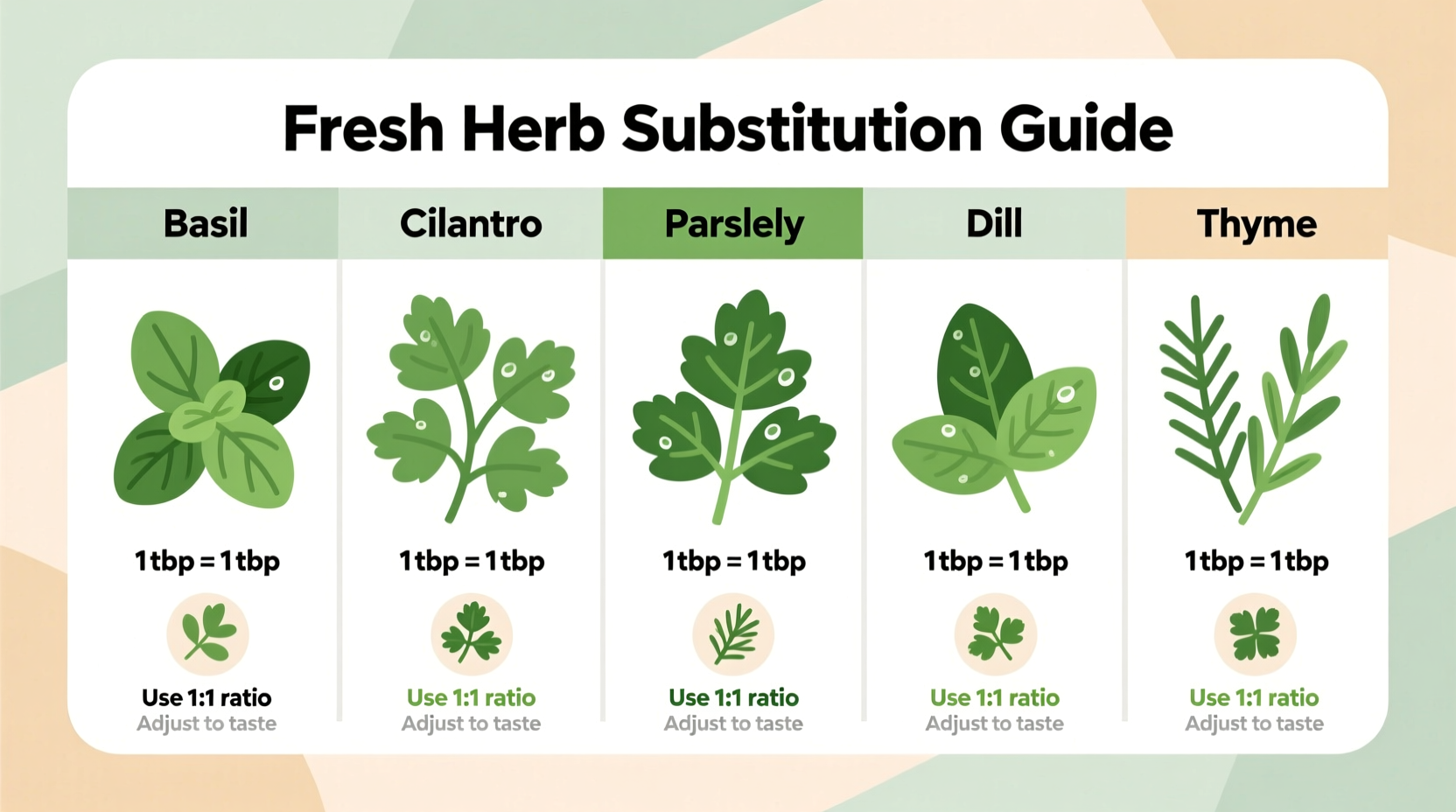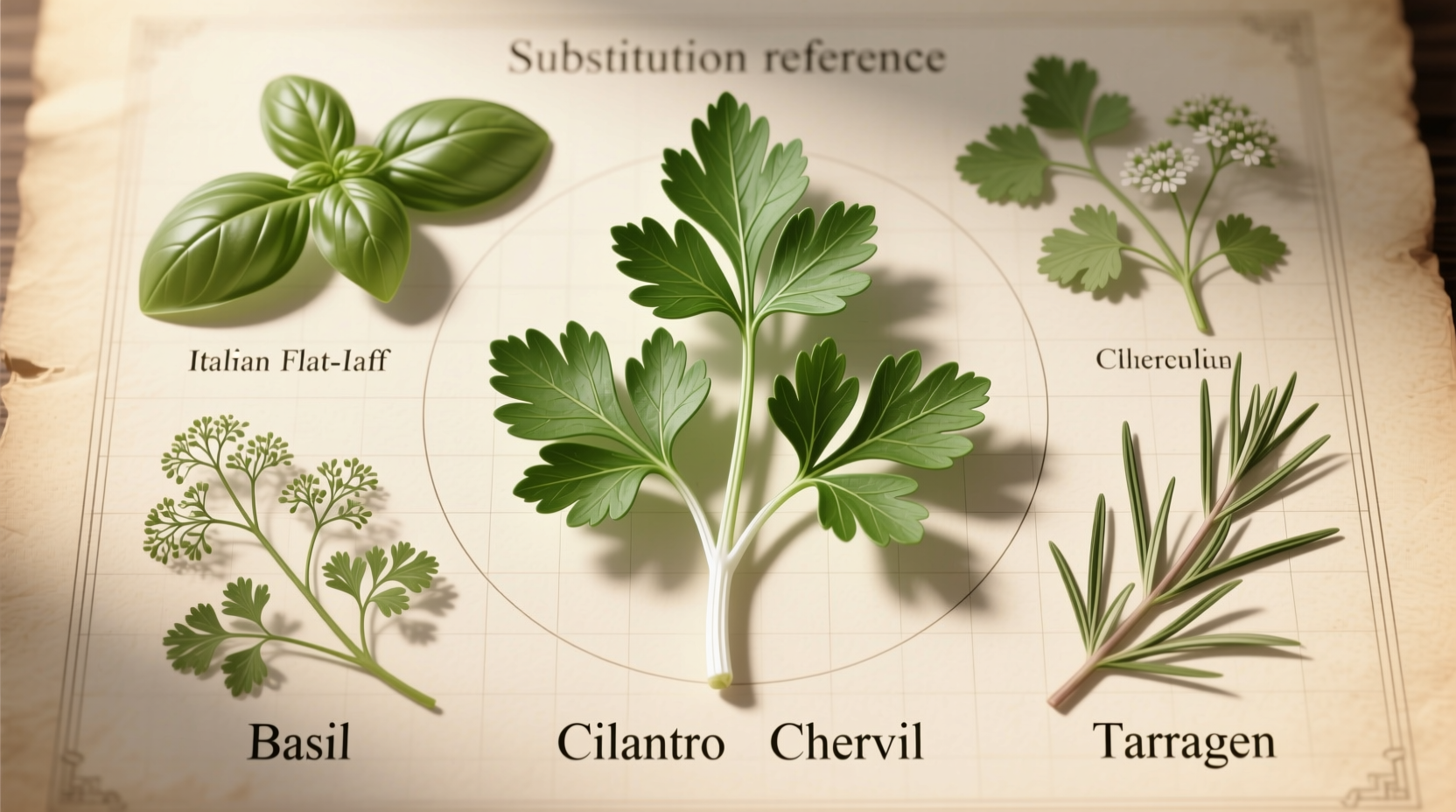Understanding Parsley's Role in Your Kitchen
Parsley isn't just a garnish—it's a culinary workhorse that adds freshness, balances flavors, and provides visual appeal to countless dishes. When you find yourself without this essential herb, knowing effective parsley substitutes prevents recipe disasters and expands your cooking flexibility. Professional chefs maintain substitute knowledge because running out of key ingredients happens to everyone, from home cooks to Michelin-starred kitchens.
Why Proper Substitution Matters
Using the wrong parsley alternative can dramatically alter your dish's flavor profile. Unlike many herbs, parsley offers a mild, grassy freshness without overpowering other ingredients. The BBC Good Food gardening guide confirms parsley's neutral profile makes it uniquely versatile across cuisines. When substituting, consider three critical factors:
- Flavor intensity—some substitutes are stronger than parsley
- Culinary context—certain herbs work better in specific dishes
- Texture and appearance—freshness matters for finishing dishes
Top Parsley Substitutes Compared
Not all substitutes work equally well in every situation. This comparison helps you choose wisely based on your specific cooking needs:
| Substitute | Flavor Profile | Best For | Substitution Ratio | Limitations |
|---|---|---|---|---|
| Cilantro | Bright, citrusy, slightly peppery | Mexican, Asian, and Latin American dishes | 1:1 fresh | Strong flavor doesn't work in European cuisine; soapy taste for some people |
| Fresh Basil | Sweet, slightly peppery, anise notes | Mediterranean dishes, tomato-based recipes | 3/4 amount | Darkens when cooked; stronger flavor than parsley |
| Tarragon | Sweet, anise-like, slightly bitter | French cuisine, chicken, fish, egg dishes | 1/2 amount | Distinct flavor changes dish character; use sparingly |
| Dried Parsley | Muted, earthy version of fresh | Cooking applications (not garnish) | 1/3 amount | Lacks freshness; only suitable for cooked dishes |
Contextual Substitution Guide
Successful substitution depends entirely on your specific culinary context. The America's Test Kitchen herb guide emphasizes that understanding these context boundaries prevents flavor mismatches:
For Mediterranean Dishes
When preparing tabbouleh, Greek salads, or Italian pasta dishes, fresh basil makes the most seamless transition. Use 3/4 the amount of parsley called for, as basil's flavor is more pronounced. For cooked Mediterranean dishes like ratatouille, a combination of 50% dried oregano and 50% dried celery seed (using 1/3 the fresh parsley amount) creates a surprisingly close flavor profile.
For Soups and Stews
In long-cooked dishes where fresh herbs lose their vibrancy, dried parsley remains the best option. When unavailable, create a "parsley alternative blend" using 2 parts dried chervil to 1 part dried celery seed. The University of California Cooperative Extension herb substitution research confirms this combination mimics parsley's subtle earthiness without dominating the dish.
For Garnishing and Fresh Applications

When presentation matters—as with finishing a dish or creating a chimichurri—substitution becomes trickier. Cilantro works beautifully for Latin American presentations but creates dissonance in French or Italian contexts. For visual appeal in European dishes, finely chopped green onions (scallions) provide similar color and mild flavor. Use the green parts only and chop extremely fine to mimic parsley's texture.
Advanced Substitution Techniques
Professional chefs employ these sophisticated approaches when perfect parsley substitutes are unavailable:
- Layered herb blends—Combine equal parts chervil, chives, and a pinch of dried marjoram for complex dishes needing parsley's freshness
- Timing adjustments—Add stronger substitutes later in cooking to prevent flavor dominance
- Acid balancing—When using stronger substitutes, add 1/4 teaspoon lemon juice per cup of herbs to mimic parsley's bright quality
- Texture matching—For tabbouleh or salads, blanch and shock stronger herbs like cilantro to reduce intensity while maintaining texture
Common Substitution Mistakes to Avoid
Based on culinary school teaching materials from Le Cordon Bleu, these errors undermine otherwise good dishes:
- Using dried herbs for garnish—Dried herbs lack visual appeal and proper texture for finishing dishes
- Equal substitution with strong herbs—Tarragon and dill require significant quantity reduction
- Ignoring regional incompatibilities—Cilantro in French cuisine creates flavor dissonance
- Substituting only by volume—Consider flavor concentration differences between fresh and dried options
When No Substitute Will Do
Some dishes simply require parsley's unique profile. The Bon Appétit culinary analysis identifies tabbouleh, persillade, and fines herbes as recipes where parsley's specific flavor is irreplaceable. In these cases, consider modifying your menu rather than forcing an unsuitable substitute. Remember that cooking is both science and art—sometimes the best choice is selecting a different recipe that works with your available ingredients.











 浙公网安备
33010002000092号
浙公网安备
33010002000092号 浙B2-20120091-4
浙B2-20120091-4